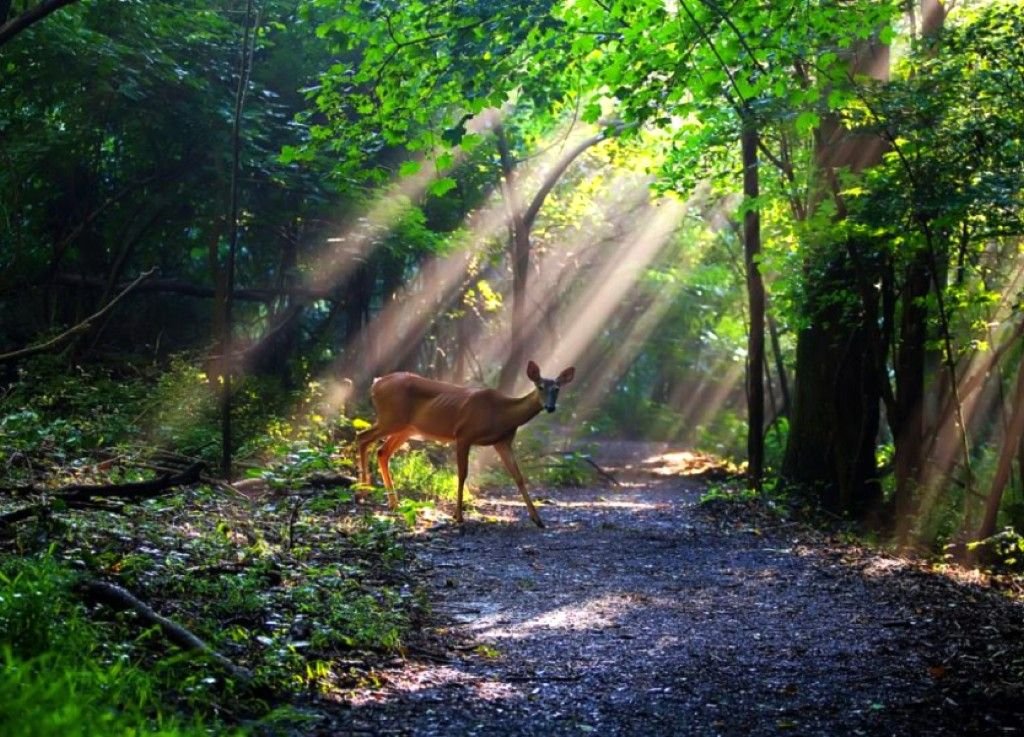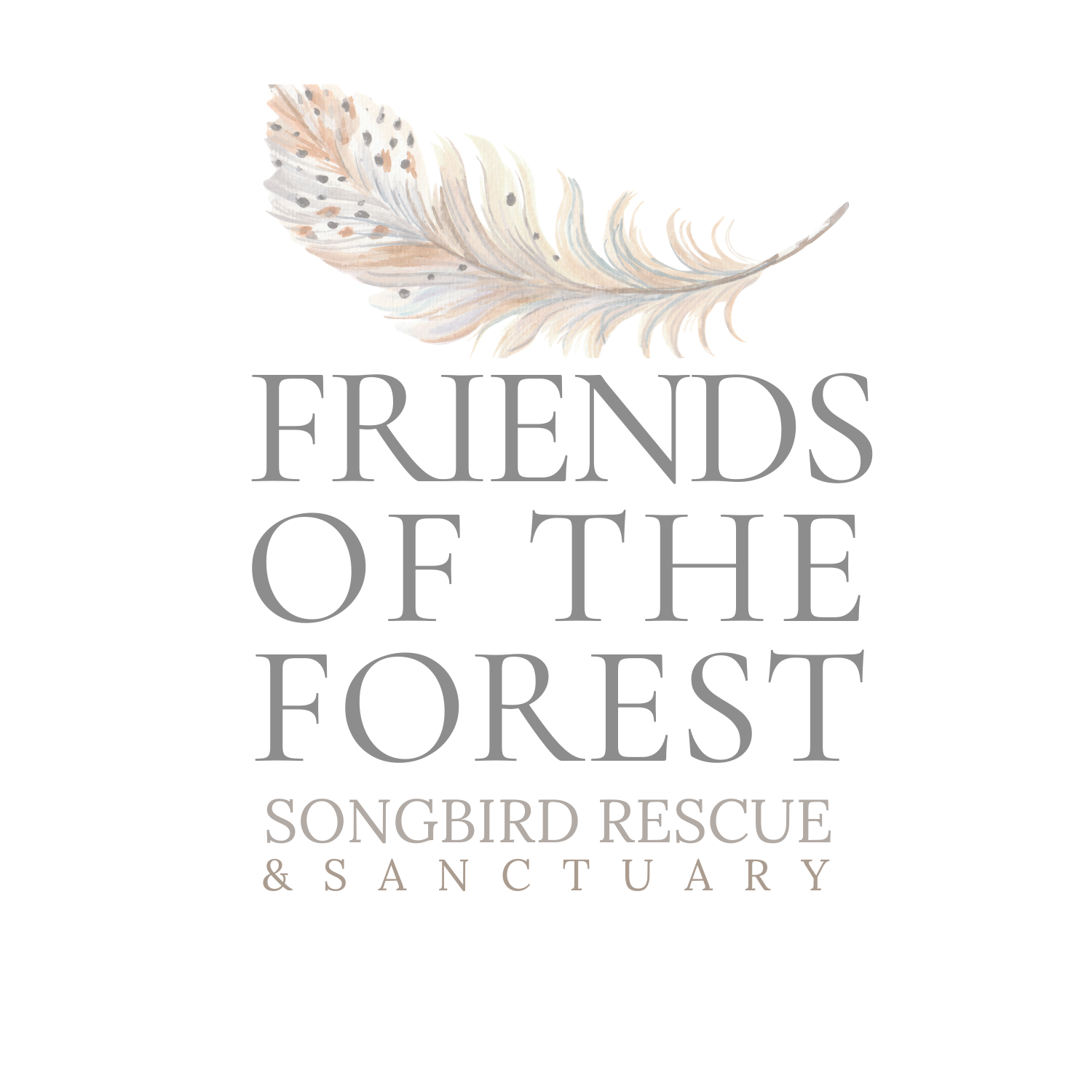Gratitude to the Trees
We are learning that forests themselves are all about connection. The fungal networks, called mycelium, partner with tree roots to transport water up from the soil and move nutrients down from sunlight to feed not only individual trees, but also for mother trees to feed their offspring. Did you know that mother trees even feed trees of other species? Trees are part of a large, interconnected community interacting with their own and other species, including forming kin relationships with their genetic relatives. Every day, researchers learn more about the extent of compassion spread throughout this “wood-wide web.”
We humans can support this compassionate connectivity.
Walking in the woods in silence, without social or mental chatter, we can practice compassionate presence, opening our senses to awareness of the life around us.
Everything in an ecosystem is connected. A tiny sapling relies on a towering ancient tree, just like a newborn baby depends on its mother. A forest tree needs the bugs in the dirt, the carcass brought to its roots by wolves, foxes, and bears, and the death and decay of its more than human companions. It thrives not in isolation, but because of dizzyingly complex connections with other trees and plants through vast but tiny fungal networks hidden below the forest floor.
Mother Trees are the biggest trees in the forest that are connected and communicate with the other trees and plants forest.
“Mother trees are the biggest, oldest trees in the forest. They are the glue that holds the forest together. They have the genes from previous climates; they are homes to so many creatures, so much biodiversity. Through their huge photosynthetic capacity, they provide food for the whole soil web of life. They keep carbon in the soil and aboveground, and they keep the water flowing. These ancient trees help forest recover from disturbances. We can’t afford to lose them.” Suzanne Simard, Ecologist

Of the approximately 3 trillion trees growing today, 15 billion are felled, die, or are lost in wildfires each year.
If these numbers are left unaddressed, our planet will lose its last tree in roughly two hundred years.
Then, slowly, all life will expire as the world becomes inhospitable.
Forest Glossary
association
a collection of plants with ecologically similar requirements, including one or more dominant species from which the group derives a definite character.
conifer
any tree that produces seeds in cones.
ecosystem
organisms and the physical factors that make up their environment.
forest fragmentation
the subdivision of large natural landscapes into smaller, more isolated fragments. Fragmentation affects the viability of wildlife populations and ecosystems.
herbaceous vegetation
low-growing, non-woody plants, including wildflowers and ferns, in a forest understory.
nontidal wetlands
wetlands not affected by ocean tides. Nontidal wetlands are subject to special regulations.
regeneration
the process by which a forest is reseeded and renewed. Advanced regeneration refers to regeneration that is established before the existing forest stand is removed.
sprout
a tree growing from a cut stump or previously established root system.
virgin forest
an area of old-growth trees that never has been harvested by humans.
biological diversity or biodiversity
the variety of life in all its forms and all its levels of organization. Biodiversity refers to diversity of genetics, species, ecosystems, and landscapes.
crown
the uppermost branches and foliage of a tree.
endangered species
any species or subspecies in immediate danger of becoming extinct throughout all or a significant portion of its range.
forested wetland
an area characterized by woody vegetation taller than 20 feet where soil is at least periodically saturated or covered by water.
introduced species
a nonnative species that was intentionally or unintentionally brought into an area by humans.
northern hardwood forest
an association of tree species common to the Northeastern United States that includes sugar maple, red maple, yellow birch, hemlock, and American beech.
sapling
a tree at least 4 1/2 feet tall and up to 4 inches in diameter.
stratification
division of a forest, or any ecosystem, into separate layers of vegetation that provide distinct niches for wildlife.
watershed
a region defined by patterns of stream drainage. A watershed includes all the land that contributes water to a particular stream or river.
canopy
the continuous cover formed by tree crowns in a forest.
deciduous
shedding or losing leaves annually; the opposite of evergreen. Trees such as maple, ash, cherry are deciduous.
evergreens
plants that retain foliage year round.
growth rings
the layers of wood a tree adds each season; also called annual rings. These rings frequently are visible when a tree is cut and can be used to estimate its age and growth rate.
mast
nuts and seeds, such as acorns, beechnuts, and chestnuts, of trees that serve as food for wildlife.
old-growth forest
a wooded area, usually greater than 200 years of age, that has never been altered or harvested by humans. An old-growth forest often has large individual trees, a multi-layered crown canopy, and a significant accumulation of coarse woody debris including snags and fallen logs.
snag
a dead tree that is still standing. Snags provide important food and cover for a wide variety of wildlife species.
threatened species
a species or subspecies whose population is so small or is declining so rapidly that it may become endangered in all or a significant portion of its range.
wildlife habitat
the native environment of an animal. Habitats ideally provide all the elements needed for life and growth: food, water, cover and space.
co-dominant tree
a tree that extends its crown into the canopy and receives direct sunlight from above but limited sunlight from the sides. One or more sides of a codominant tree are crowded by the crowns of dominant trees.
dominant trees
trees that extend above surrounding individuals and capture sunlight from above and around the crown.
forest
a biological community dominated by trees and other woody plants.
habitat
the ecosystem in which a plant or animal lives and obtains food and water.
niche
the physical and functional "address" of an organism within an ecosystem; or, where a living thing is found and what it does there.
overstory
the level of forest canopy that includes the crowns of dominant, codominant, and intermediate trees.
softwood
any tree in the gymnosperm group, including pines, hemlocks, larches, spruces, firs, and junipers. Softwoods often are called conifers although some, such as junipers and yews do not produce cones.
understory
the level of forest vegetation beneath the canopy.
wolf tree
a large older tree with a spreading crown and little or no timber value, but often great value for wildlife.

